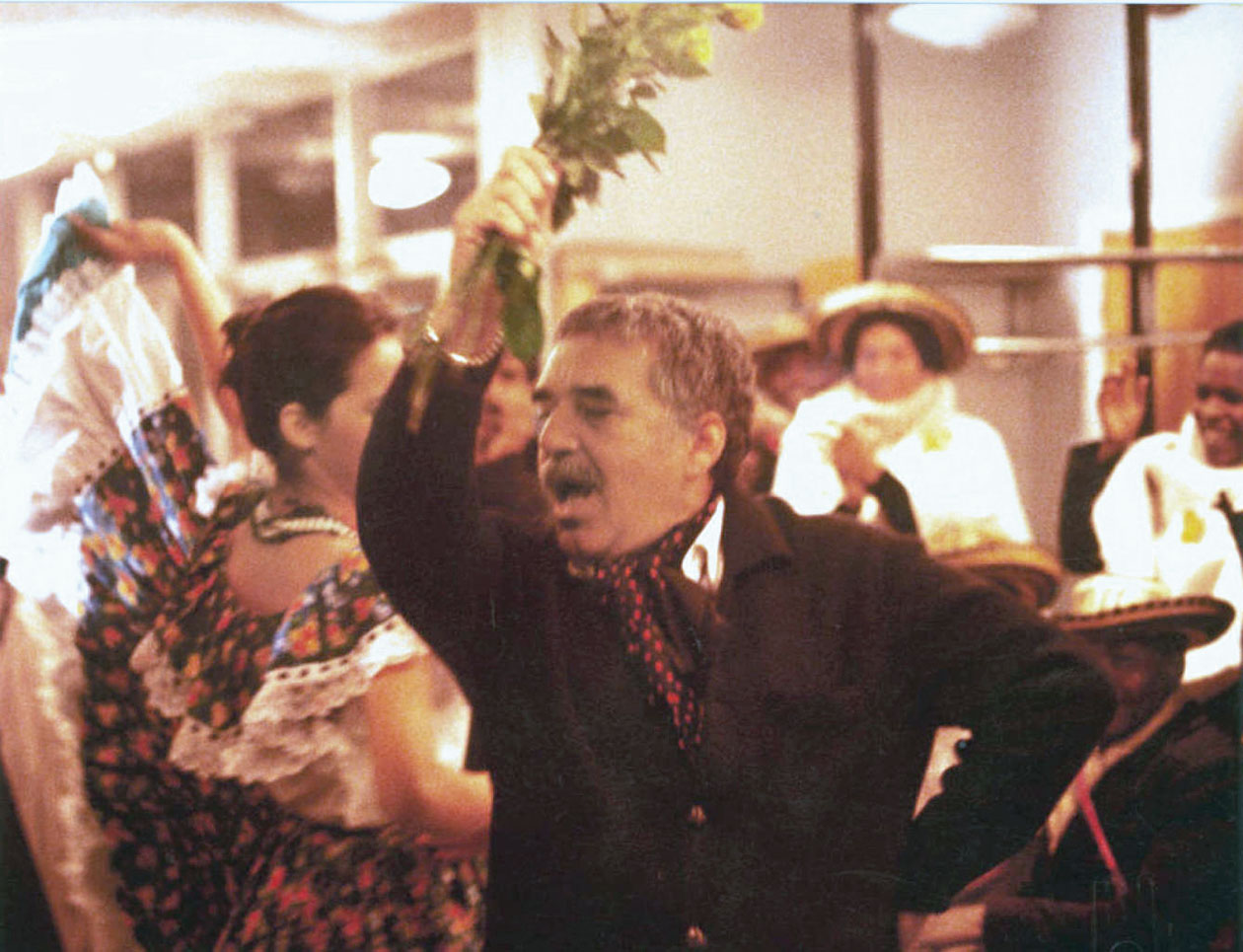One Hundred Years of Solitude and its eventual popularity also changes Márquez the writer. He who had worked till that point in his life towards being mature enough to deliver this singular work that he carried within him, becomes determined to “dismantle” his style, start afresh. Márquez was not the only one struggling with his style; so were the Latin American writers who came after him, weighed down by the tremendous burden of expectations created by Gabo.
Yet, all his shortcomings notwithstanding, friends and foes alike are quick to claim an acquaintance with him and boast about his closeness with some distant relative of theirs. And from these reminiscences surface familiar faces. Someone’s uncle brings to mind Pietro Crespi, the beautiful Italian from One Hundred Years of Solitude, another’s father is the inspiration for Juvenal Urbino from Love in the Time of Cholera, while a widely-known scandal becomes the basis of Chronicle of a Death Foretold. Village gossip is not the only kind that is disclosed either. The book is also full of the juiciest literary gossip, such as the intriguing speculations about the fallout between Márquez and Mario Vargas Llosa, which ended with Gabo getting a black eye. Skeletons — albeit ones built of pure conjecture — also tumble out of the closets of the likes of Bill Clinton and Fidel Castro.
As inconstant as a memory shaped by time and personal equations is language; some words and phrases just defy translation and left in their original form can only give readers a sense of what the speaker means. But Edith Grossman — who has translated several of Márquez’s works, including his autobiography — deftly bridges such linguistic gaps, seamlessly conveying to readers a picture of the world from where Gabo got his gift of the gab.
Out of this loud banter appears the image of a man who has as many faces as he has friends. Is Márquez the guy who hardly drank with his friends because he had no money to contribute or is he the millionaire who hated paying bills and seldom did? Is he the egotist who says, ‘I won the Nobel Prize’ to win an argument or the celebrated author who had “a certain insecurity regarding his place”? Is he the writer who “disarmed the pedants” with his deceptively simple language or one who “became famous and pedantic”? Márquez is all of this and, at the same time, none of it. For oral history is nothing, as he puts it in Living to Tell the Tale, but “fiction about fiction”. As motives tumble out — a disgruntled friend complains about Márquez stealing his credit — and voices contradict each other — “A lie! It never happened” — and people confess to ‘making up stories’, the real Márquez becomes ever more difficult to pin down, belying Paternostro’s hopes of demystifying him. But who does not like a complex mystery?
What is easily discernible, though, is that fame did change Gabo. Fame and power, things he seemed to have craved for all his life, “attacked him... like a bull,” says his godson, “[a]nd then gradually, slowly, another person begins to appear”. Fittingly, Paternostro divides her book into two segments. The first is aptly titled B.C. or Before Cien años de soledad, gathering memories of irreverent and hopeful times when a boy from the provinces decided to become a writer. In the second segment, A.C. or After Cien años de soledad, Márquez has become the best known writer in Latin America and uses the opportunity of rubbing shoulders with the powerful “to help Latin America. Intervene for Cuba... Intervene in political problems, help the people going through whatever.”
A magician never reveals his secrets, but his friends may know a thing or two about his tricks. In Solitude & Company, Silvana Paternostro offers readers a chance to listen in on the whispers within the magic factory that gave birth to One Hundred Years of Solitude and the surreal world of Macondo, hoping, in the process, to demystify its creator, Gabriel García Márquez. The life and times of the Nobel Prize-winning author, then, are recreated not in his own quasi-realist words, or through the reverential eyes of an official biographer, but by piecing together anecdotes shared by his friends and fellow weavers of yarn. What emerges is a dizzying cacophony of voices, each torn between fondness, admiration, envy and nostalgia. These accounts have — in line with the great oral tradition — mutated with each retelling, thereby enriching this sweeping narrative.
But Paternostro is every bit the ingenious journalist that Márquez always aspired to be. “[T]he tape recorder,” the Colombian author once said in an interview, “must only be used to record material that the journalist will decide to use later on, that he will interpret and will choose to present in his own way. In this sense it is possible to interview someone in the same way that you write a novel or poetry.” So Paternostro slices and splices her way through some one hundred hours of individual interviews, picking and then arranging the dialogues of sets of characters to simulate noisy discussions among friends. In a testament to Paternostro’s skill as an editor, each member of the cast retains his or her unique voice so that, eventually, the discerning reader can identify the speaker without having to read the name — quite a feat given the number of individuals she speaks to. Digressions and drink orders are intentionally left in, not only adding to the sense of an intimate, boozy gathering but also providing engaging titbits about other personalities.
A magician never reveals his secrets, but his friends may know a thing or two about his tricks. In Solitude & Company, Silvana Paternostro offers readers a chance to listen in on the whispers within the magic factory that gave birth to One Hundred Years of Solitude and the surreal world of Macondo, hoping, in the process, to demystify its creator, Gabriel García Márquez. The life and times of the Nobel Prize-winning author, then, are recreated not in his own quasi-realist words, or through the reverential eyes of an official biographer, but by piecing together anecdotes shared by his friends and fellow weavers of yarn. What emerges is a dizzying cacophony of voices, each torn between fondness, admiration, envy and nostalgia. These accounts have — in line with the great oral tradition — mutated with each retelling, thereby enriching this sweeping narrative.
But Paternostro is every bit the ingenious journalist that Márquez always aspired to be. “[T]he tape recorder,” the Colombian author once said in an interview, “must only be used to record material that the journalist will decide to use later on, that he will interpret and will choose to present in his own way. In this sense it is possible to interview someone in the same way that you write a novel or poetry.” So Paternostro slices and splices her way through some one hundred hours of individual interviews, picking and then arranging the dialogues of sets of characters to simulate noisy discussions among friends. In a testament to Paternostro’s skill as an editor, each member of the cast retains his or her unique voice so that, eventually, the discerning reader can identify the speaker without having to read the name — quite a feat given the number of individuals she speaks to. Digressions and drink orders are intentionally left in, not only adding to the sense of an intimate, boozy gathering but also providing engaging titbits about other personalities.

Gabriel Garcia Marquez Public domain image from the Harry Ransom Center at The University of Texas, Austin












